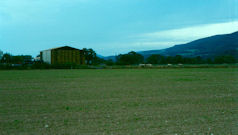
Figure 31: Le Grands Champ; Autun in the distance
Situated on the lower terrace between the Celle and the Arroux, is Le Grands Champ, one of the locations where Gallo-Roman material was recorded by Niaux (1991-2).
Linewalking on a field of ploughed-in stubble here, followed by a small gridded collection, yielded 164 fragments of pottery in a concentrated area of around 30 by 40m in the north-east corner of the field, together with a scatter of Roman tile, including tegulae, and building stone. Follow-up low-resolution gradiometry confirmed a noisy response in this area suggestive of buildings, but revealed no very clear plans. Resistivity in the recently ploughed field was also unsuccessful at revealing any building plan.
The ceramics constitute our second largest assemblage, despite the small area and the poor visibility. Not only that, but the group contained a wide range of fabrics, including samian, Dressel 20 amphora, flagon, and storage jar, albeit with an obvious bias towards orange sherds, owing to the relatively unweathered condition of the field when walked and the additional hampering factor of regenerating crop and weeds.
The pottery from Le Grands Champ (UF 15 & 18)
No. of sherds: 165; weight: 2771g
This assemblage includes a range of material and appears to provide a relatively long sequence potentially from the 1st century BC (or earlier) to the 4th century AD. The two Dressel 1 sherds and a coarseware sherd in fabric B2a may be late La Tène. Dressel 20 and identifiable Gallo-Roman coarseware forms indicate occupation spanning the 1st-3rd century AD (Fig. 80, 11, 13, 15, 17, 20; Fig. 81, 22-25); later occupation may be indicated by a single sherd of 4th-century AD date (Fig. 80, 16).
On the basis of parallels from other sites in the region, the majority of sherds date from the 2nd-3rd century AD (Fig. 80, 12, 14, 18, 19; Fig. 81, 21). This concurs with the samian: this is predominantly Central Gaulish from Lezoux from the 2nd century AD (Section 6.4, TS2-6, 9, 10, 16, 23, 24, 26-30), together with some South Gaulish, late 1st-century AD material (Section 6.4, TS1, 7, 25), and a single sherd of Eastern Gaulish samian (Section 6.4, TS8) - products notably absent from other sites. The high proportion of samian and its relatively varied nature may be indicative of the site's status.
Considering the size and quality of the assemblage, the relatively limited amount of early fabrics and small amount of Dressel 1, may suggest limited activity prior to the 1st century AD.
According to the owner, finds have been made in the past on the other side of the adjacent main road, in fields now under pasture, suggesting that the site continued in the direction of the present Les Granges Farm, which itself has at least medieval origins.
| Linewalked: 10m transects (4.30 ha) followed by gridded collection (4 x 30m squares) | 15 18 | Figs. 80 and 81 Diagnostic ceramics |
| Gradiometry survey: 1.0m x 0.5m (0.36 ha)
Resisitivity survey: 1.0m x 1.0m (0.18 ha) | 16, 17 | Fig. 32 Gradiometry results Fig. 33 Resistivity results Fig. 34 Geophysics interpretation |
© Internet Archaeology/Author(s)
URL: http://intarch.ac.uk/journal/issue25/3/5.2.1.html
Last updated: Wed Oct 29 2008